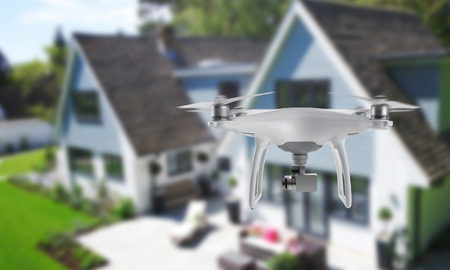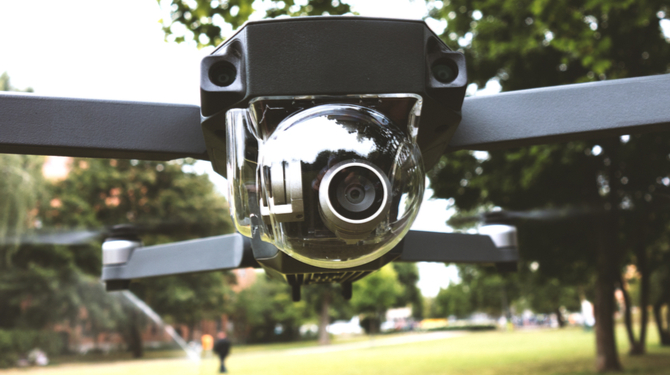By Rosalie Bartlett and Garrett Smith of Kespry
Kespry's Drone System
Kespry is the leading provider of aerial intelligence for industries with field operations. The platform uses autonomous drones for data capture. The system is designed to automate flight, data transfer, and post processing. It makes capturing accurate data insights from the field simple, and makes those insights available to your business via the online Kespry Cloud.
The system consists of the Kespry Drone, which flies itself (no joysticks), captures all the data, and, immediately upon landing, automatically uploads all the data to the Kespry Cloud wirelessly. The Kespry communications hub, which includes flight safety controls, built in wifi, an LTE data network connection, and an iPad for mission planning. The Kespry Cloud, where all of the data is stored, processed and accessed by customers, makes it incredibly easy to share across organizations. And the Kespry Customer Success team, that provides dedicated support to each customer to ensure trouble-free onboarding, compliance, and problem solving, with the goal of maximum uptime and business value from the system. Kespry also includes $1M of aviation insurance with each system.
For Insurance specifically, the Kespry system dramatically decreases claim cycle times, with less time needed on site. Ladder assists are no longer needed and same-day reporting is built in. Using Kespry, it’s possible to complete twice as many claims per day while reducing overall costs.
FAA and Regulation
In August of 2016, the FAA made a significant update with Part 107. Part 107 allows for commercial operations after an operator passes a relatively short and straightforward test at an FAA testing center.
It’s a small amount of study and some understanding of airspace restrictions, plus appropriate use for drones in commercial and industrial use cases.
Part 107 has made it much easier for our enterprise customers to execute an aerial intelligence program in-house. Kespry welcomes regulation at this stage, as it provides a clear framework to what is a very young and relatively unstructured industry.
Impact of Drones
By using automated drone technology like Kespry, a claims rep or an adjuster from an insurance carrier assigned to a roof related claim is improving their overall efficiencies on a daily basis by more than two times.
To speak to specifics, when a P&C carrier receives notification from a policyholder that they’ve had damage to their roof and a claim has been opened, an insurance carrier will then send a claims representative or a field adjuster out to that house to conduct an inspection. That person is going to get up on the roof, potentially having to contract third parties to come in and handle steep or tall roofs. They're going to have to either manually measure and sketch the roof to generate dimensional information to include in the estimate or they'll have to contract with an external aerial imagery or dimension report provider.
Kespry makes it possible for that same Claims Adjuster to arrive on site with a Kespry drone, fly over the property in just a few minutes without having to climb on roofs or rely on third parties for ladder assists, and have detailed and highly accurate dimension information of that property in just a few minutes. In addition, this information is also made available to the rest of the organization via the online Kespry Cloud before the Adjuster has even left the property.
As I’m sure you can appreciate, this new workflow is significantly impacting the productivity, efficiency and profitability of insurance organizations. Even better, it is doing this while delivering a better customer experience.
Beyond Drones
Artificial Intelligence and machine learning are at the core of what Kespry offers. The company continues to develop compelling tools and industry specific applications that further enhance downstream analytics and business intelligence and deepen the value the Kespry Platform is able to deliver.
Here are two insurance industry examples to illustrate.

The first is a high accuracy dimension extraction tool. This allows us to generate accurate dimension wireframes that will remove the need for insurance carriers, field reps, IAs and ladder assist folks to manually sketch or order automated reports from a third party.
This is done in-house very simply, easily, and on an automated basis for all roofs. It’s a precise total dimension report.

The second example is an automated damage detection tool. Using machine learning, Kespry has trained the system to recognize hail damage across an entire roof surface and make automated assessments. This has two clear benefits. First, it is more accurate than conventional methods where a sample square is used to calculate an average over the whole roof surface. Second, the machine learning can tell the difference between naturally occurring hail damage patterns and man-made damage patterns created with, for example, a hammer, preventing fraudulent insurance claims.


.jpg)
.jpg)
.jpg)

.jpg)



.jpg)
